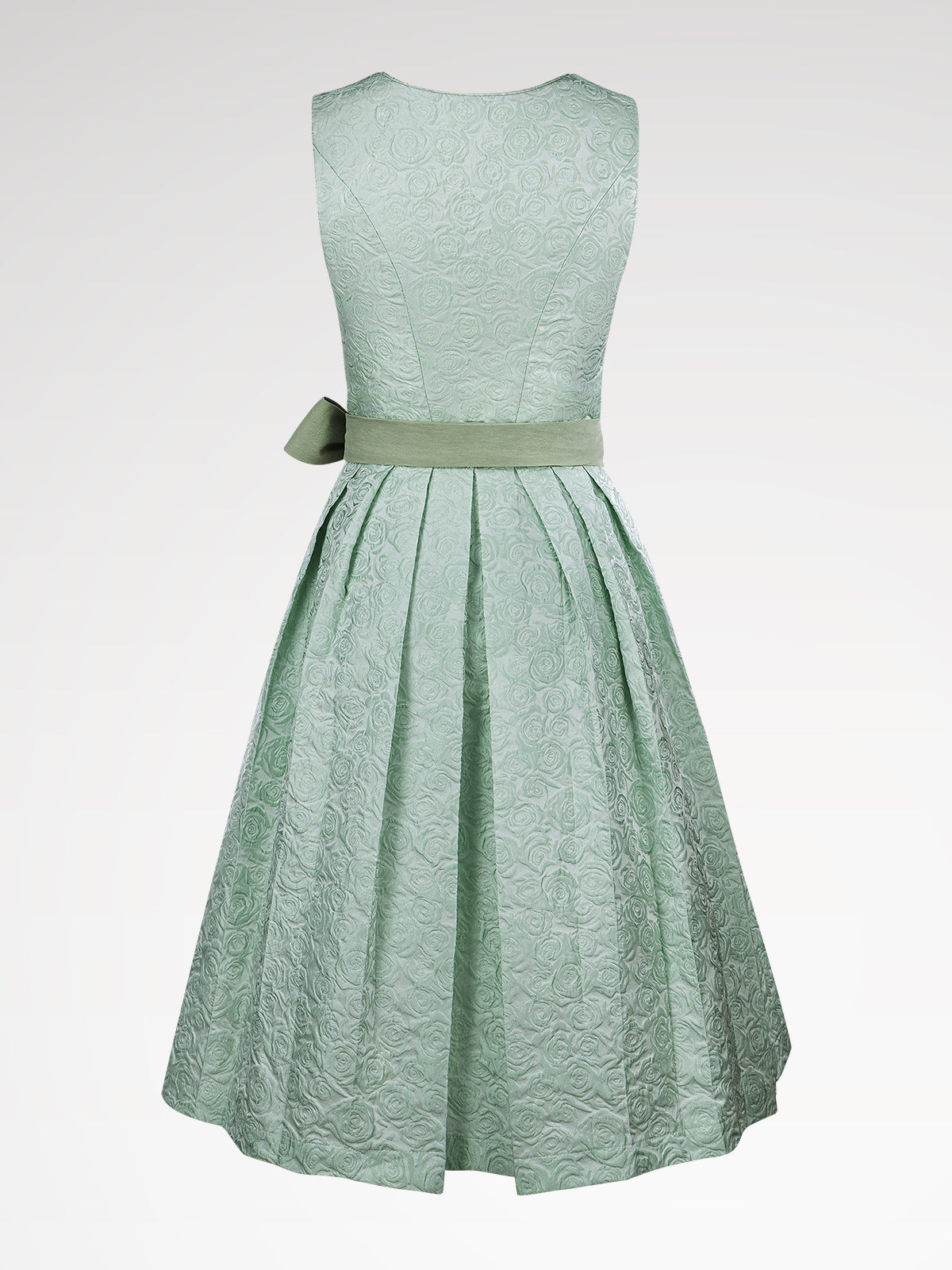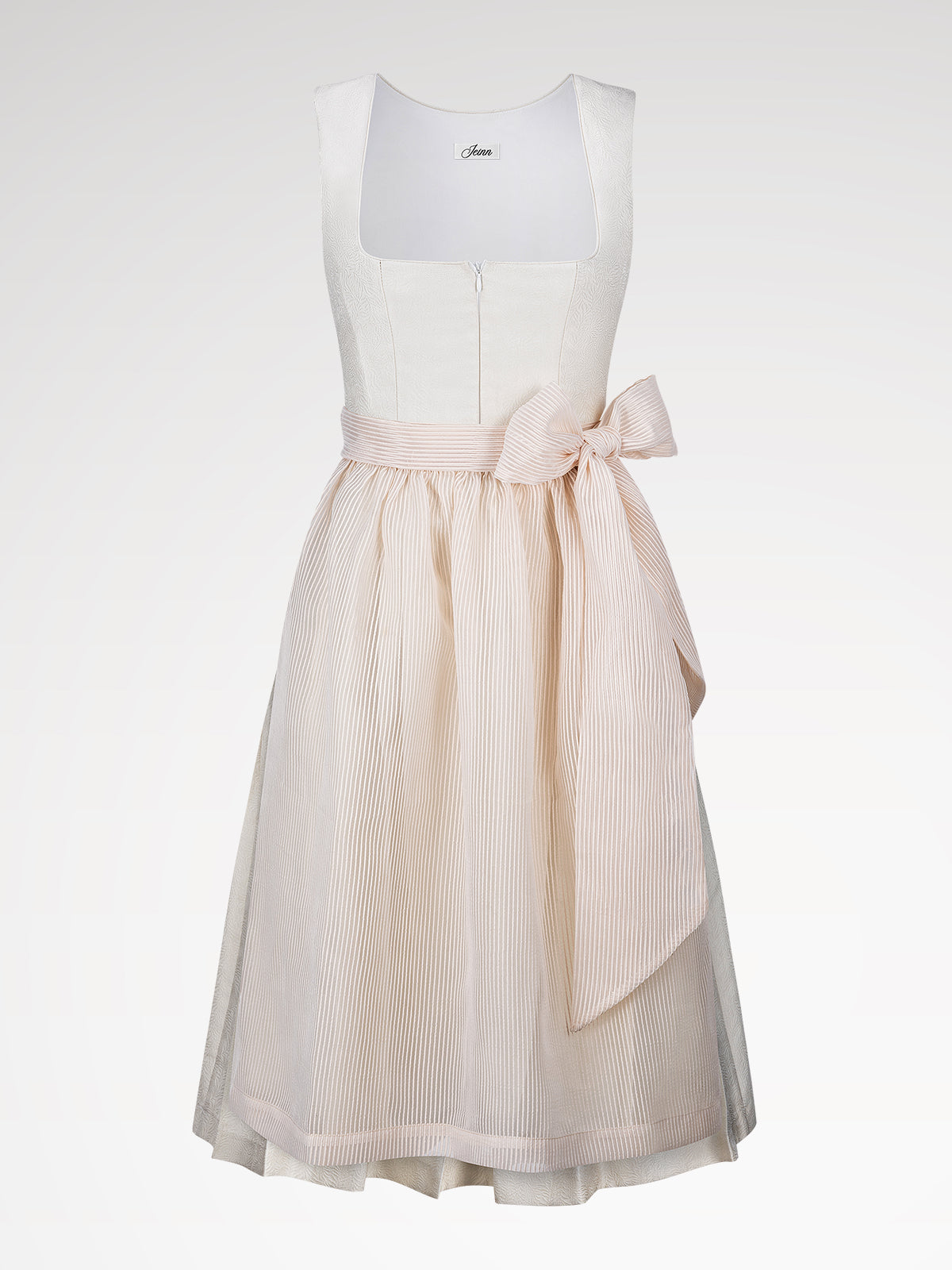The dirndl, once a symbol of Bavarian folklore, is experiencing a stylistic renaissance in 2025. At the Oktoberfest and traditional festivals, historical craftsmanship blends with avant-garde designs. This evolution reflects not only fashion trends but also social values: sustainability, individuality, and technological integration. Here are the most significant developments that every traditional costume lover needs to know.
The return of retro elements: refined details
Historical cuts take over the stage – with surprising twists:
- Puff sleeves (balloon sleeves): Inspired by 19th-century romanticism, sleeves are now more voluminous, but in lightweight, recycled fabrics such as Tencel or organic cotton. They accentuate the waist and create a sylph-like silhouette, especially in dirndl beige simple-models.
- Square necklines: A Renaissance revival! This neckline is given a modern interpretation with transparent lace inserts that reveal subtle skin while maintaining traditional discretion. Ideal for alpenglanz dirndls with a shimmering finish.
- Jabot collar: Baroque ruffled collars made of recycled organic silk give the top an aristocratic elegance – perfect for a minimalist dirndl beige plain with a contrasting apron
These details are not just decoration: they tell stories of past eras and underline the precision of craftsmanship.
Colors and materials: simplicity meets magic
Monochromatism dominates, but with subtle revolutions:
- Beige is the new black: The simple beige dirndl is becoming a classic for timeless elegance. Combined with satin aprons in terracotta or mustard, harmonious contrasts emerge that make every outfit unique.
- Alpine shine effects: The star of the season! Alpine shine dirndl integrate microfine mica particles into organic cotton fabrics that create light reflections like sunrises over mountain peaks when moved. This technology, originally developed for skiwear, adds futuristic depth to traditional cuts.
- Sustainable innovations: Fabrics made from apple leather (a waste product from the juice industry) and mushroom mycelium (a vegan leather alternative) are gaining popularity. Plain beige dirndls, in particular, utilize these materials for structural accents like waist piping.
Example combination: An alpenglanz dirndl in ice blue, paired with an apron made of recycled brocade – this is how tradition becomes a statement for eco-fashion.
Focus on functionality: Practical everyday dirndl wear
Modern dirndls must not only be beautiful, but also comfortable:
- Front zippers: The dirndl's front zipper revolutionizes the way you put on your dirndl. Hidden behind decorative button plackets or lace ribbons, it allows for quick changes—essential for long festive days. Especially with figure-hugging, simple beige dirndls, it creates a perfect fit without compromise.
- Adaptive cuts: Stretchy cotton blends with elastane allow freedom of movement without sacrificing the silhouette. Combined with a dirndl zipper at the front, this dirndl is suitable for everyday wear.
- Aprons with a tech touch: Magnetic closures instead of ribbons! Invisible magnets in apron edges simplify tying and simultaneously symbolize the changing gender roles—a subtle reference to modern social stereotypes.
Technology and Personalization: The Future of Shopping
Artificial intelligence makes traditional fashion more accessible:
- AI styling tools: Virtual fittings via app show how a petrol-colored Alpenglanz dirndl or a simple beige dirndl with a sweetheart neckline will look on your figure. Users can adjust colors, cuts, and details like the dirndl's front zipper in real time—resulting in 70% fewer returns.
- 3D-printed decorations: Individual embroidery patterns, digitally designed and printed on organic cotton, make each dirndl unique. Plain beige dirndl designs especially benefit from this personalized opulence.
Cultural significance: More than just a festive outfit
The Dirndl 2025 is an expression of a new identity:
- Symbol of inclusion: With sizes from 32 to 52 and adaptive cuts, traditional clothing is accessible to all body types. dirndl zipper front It also makes it easier for people with limited mobility to get dressed.
- Sustainability as a ethos: 78% of shoppers prefer certified organic materials. A simple beige dirndl made of vegetable-tanned leather or recycled polyester combines aesthetics with responsibility.
- Feminine empowerment: The combination of retro-inspired cuts and functional elements such as the dirndl zipper at the front reflects female self-determination – elegant, but independent of conventional expectations.
Outlook: What comes after 2025?
The dirndl revolution is just the beginning! By 2026, handwoven regional fabrics like Allgäu linen or lace from Oberammergau will dominate the scene—a return to local craftsmanship that is already evident in sustainable, simple beige dirndl collections.





Leave a comment
This site is protected by hCaptcha and the hCaptcha Privacy Policy and Terms of Service apply.